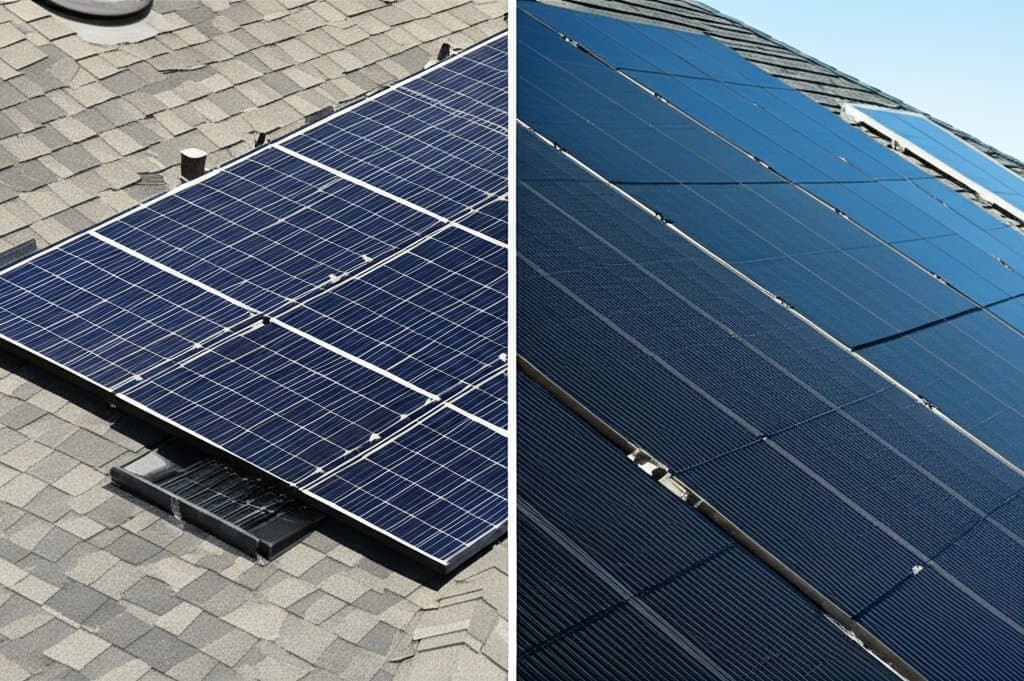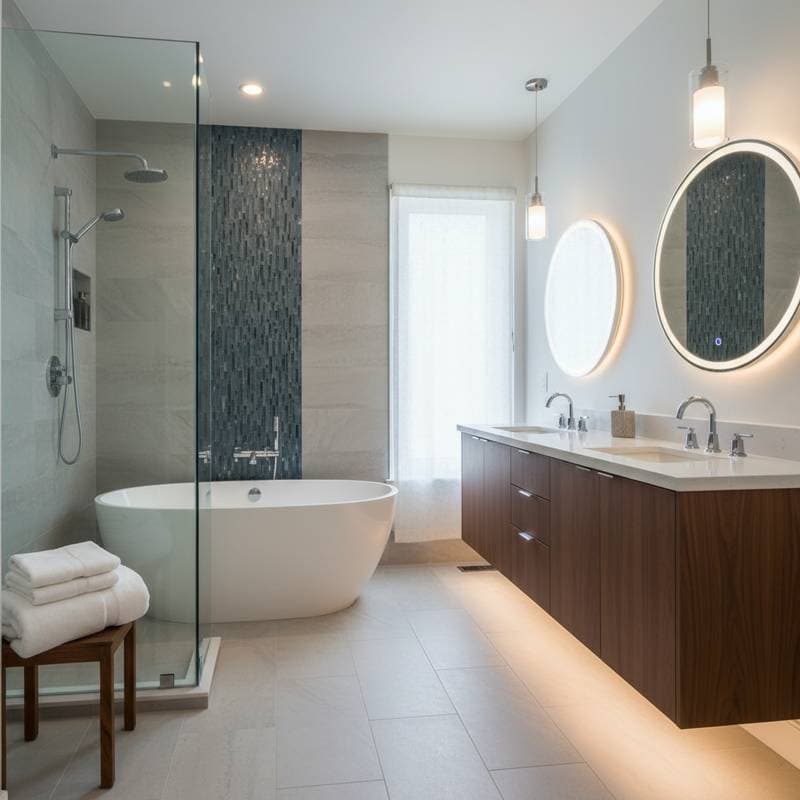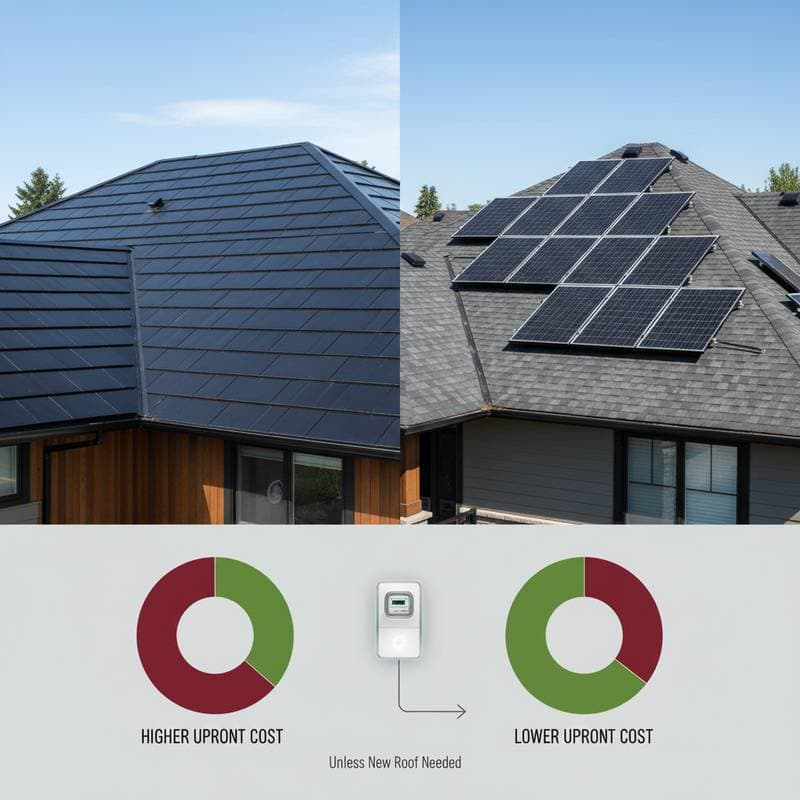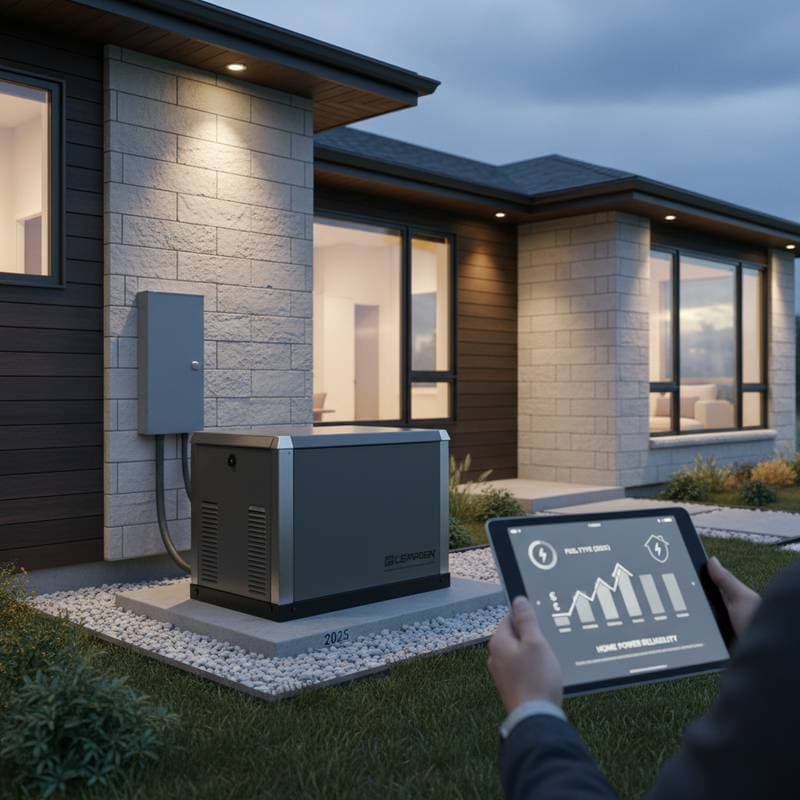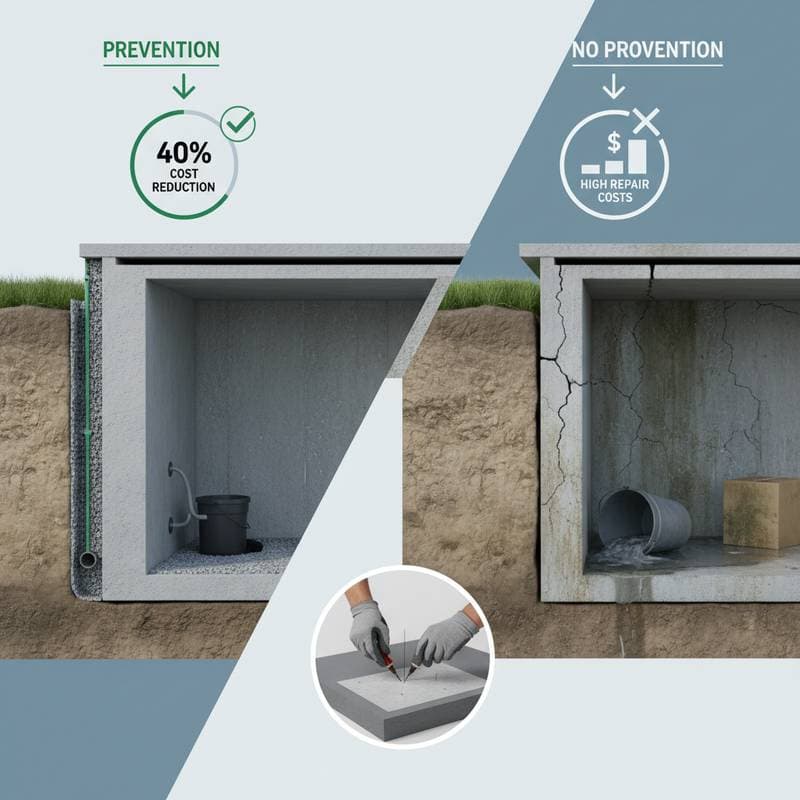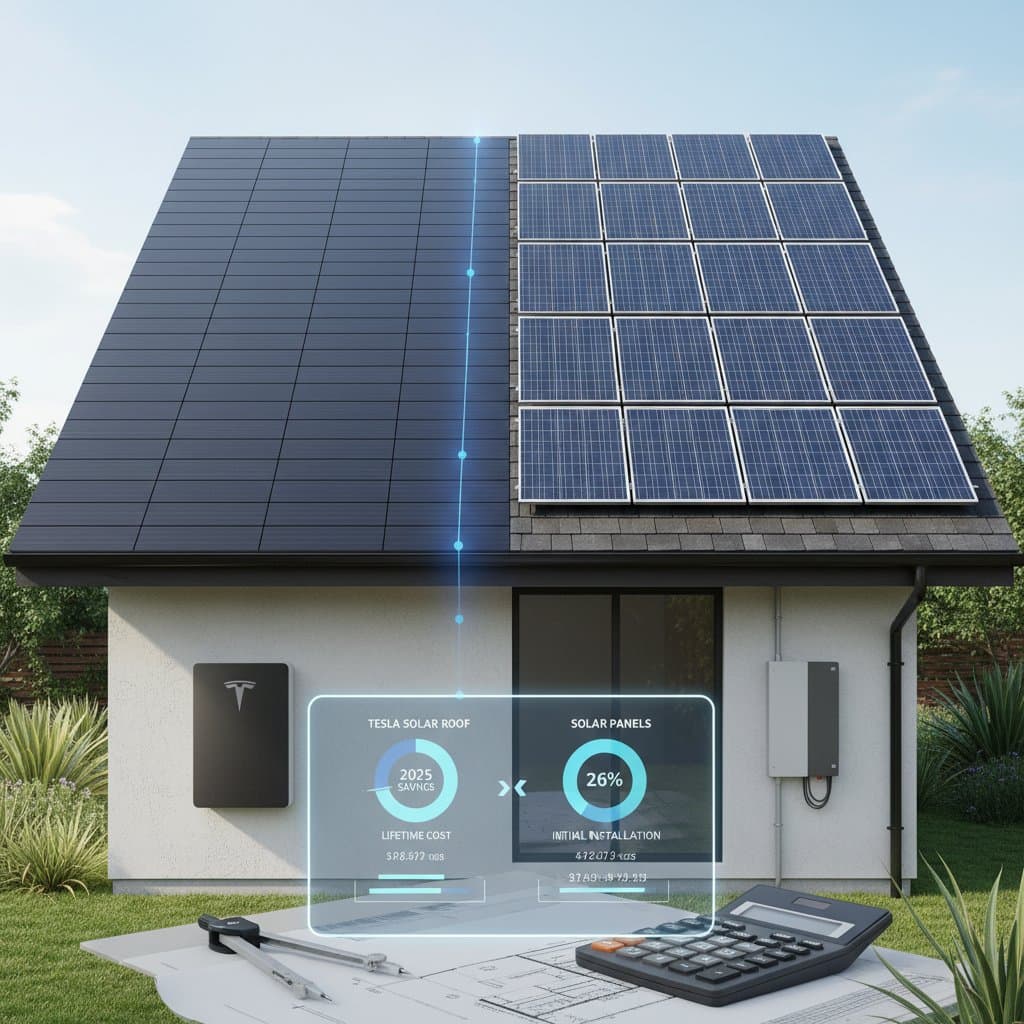Solar Shingles vs. Traditional Panels: A 2025 Cost Comparison
Homeowners exploring solar energy must weigh traditional panels against innovative solar shingles. Panels mount atop the roof and generate power reliably. Shingles, however, replace roofing material while producing electricity. This decision influences your home's appearance, energy savings, and overall expenses. With advancements in solar tech and installation techniques, the differences between these options continue to shrink. A clear assessment of costs, performance, and practicalities guides you toward the best fit for your property and finances.
Breaking Down Costs: Solar Shingles Compared to Panels
Cost stands as a primary consideration for solar installations. Prices fluctuate depending on system size, roof pitch, regional incentives, and installer expertise.
Key Costs for Traditional Solar Panels
- Full system price: $15,000 to $25,000 for a typical home setup covering 5 to 10 kilowatts.
- Installed cost per watt: $2.50 to $3.50, factoring in panels, inverters, and mounting hardware.
- Expected lifespan: 25 to 30 years, with warranties often covering 80% efficiency at year 25.
- Upkeep expenses: Minimal, limited to annual cleaning and inverter swaps every 10 to 15 years at $1,000 to $2,000.
Key Costs for Solar Shingles
- Full system price: $30,000 to $55,000 for a complete roof conversion on a medium-sized home.
- Installed cost per watt: $4.50 to $7.00, reflecting premium materials and labor-intensive integration.
- Expected lifespan: 20 to 25 years, with performance guarantees similar to panels but tied to roof durability.
- Upkeep expenses: Moderate, including roof inspections every five years and potential section replacements at $5,000 to $10,000.
Solar shingles cost more upfront because they serve as both roofing and energy generators. This dual role eliminates separate roofing expenses if your current roof requires replacement within the next decade. Factor in federal tax credits, which can reduce costs by 30% for either option, and state rebates that vary by location. To estimate your savings, calculate your annual energy bill and multiply by the system's projected output over its lifespan.
Aesthetics and Design Integration
Visual appeal often tips the scale toward solar shingles. These units replicate the texture and color of standard asphalt or composite shingles, lying flat against the roofline. Homeowners with prominent roofs or in neighborhoods enforcing design guidelines appreciate this discreet integration, preserving architectural harmony.
Traditional panels protrude several inches above the surface, secured by racks and rails. While bulkier, recent innovations like frameless and monochromatic designs minimize their profile. If energy production outweighs appearance in your priorities, panels blend adequately on most homes. Assess your roof's visibility from the street and consult local zoning rules to determine if aesthetics justify the premium price of shingles.
Durability, Weather Resistance, and Upkeep
Solar systems endure harsh conditions, yet their construction affects longevity and repair ease.
Advantages of Traditional Panels
- Elevated positioning shields the underlying roof from direct rain and debris impact.
- Modular design allows quick replacement of damaged panels without roof disruption.
- Airflow beneath reduces heat buildup, preserving efficiency in hot climates.
Advantages of Solar Shingles
- Seamless roof incorporation enhances overall structural integrity against wind and hail.
- Unified surface prevents leaks at seams, common in older panel mounts.
- Engineered for thermal expansion, matching the roof's movement over time.
Panels prove simpler to maintain, as technicians access them without specialized roofing tools. Shingles demand certified professionals for repairs, potentially extending downtime. In storm-prone areas, opt for impact-rated models from both categories. Regular checks for shading from trees or chimneys ensure optimal performance year-round.
Environmental Benefits and Sustainability
Both solar shingles and panels generate renewable energy, slashing household carbon footprints by up to 50 tons over their lifetimes. Production processes for either involve similar silicon-based photovoltaics, with payback on embedded energy occurring in one to three years of operation.
Shingles edge out slightly by consolidating materials, avoiding the transport and disposal of separate roofing. Panels, however, often achieve higher yields per square foot, amplifying total clean energy output. To maximize eco-impact, pair your system with energy-efficient appliances and consider battery storage for off-grid resilience. Track your system's production via apps to monitor reductions in grid reliance.
Ideal Scenarios for Choosing Traditional Panels
Traditional panels suit the majority of installations due to their established reliability and adaptability. Select panels when:
- Your existing roof remains sound, postponing any full replacement for years.
- You seek peak efficiency from limited space, as panels convert sunlight at 18% to 22% rates.
- Future expansions appeal, since adding modules requires minimal structural changes.
- Quick financial returns matter, with payback in 6 to 10 years versus 10 to 15 for shingles.
With widespread availability and installer familiarity, panels minimize risks. They integrate easily with smart home systems for real-time monitoring and automated adjustments.
Ideal Scenarios for Choosing Solar Shingles
Solar shingles shine in specific situations where form meets function. Consider them if:
- Roof replacement looms, allowing bundled costs for a streamlined project.
- Aesthetic preservation is essential, such as in historic districts or modern minimalist designs.
- Durability trumps modularity, providing a single, warrantied roof-solar unit.
- Long-term aesthetics boost property value, appealing to future buyers.
Though pricier, shingles future-proof your home against rising energy costs while enhancing visual appeal.
Safeguarding and Extending Your Solar System's Performance
Professional installation by NABCEP-certified experts ensures compliance and efficiency from day one. Conduct biannual inspections focusing on connections, seals, and output metrics to catch issues early.
Clear debris promptly using soft brushes or hose sprays, avoiding abrasive cleaners that scratch surfaces. In snowy regions, use roof rakes for safe removal without damaging mounts. Budget for micro-inverters or optimizers to handle partial shading, maintaining 95% efficiency.
Anticipate life-cycle events like roof overhauls by selecting compatible systems. This foresight avoids reinstallation fees, which can exceed $5,000. As innovations emerge, such as perovskite-enhanced cells promising 25% efficiency, revisit upgrades every decade to sustain savings.
Securing Long-Term Value from Your Solar Choice
Aligning solar shingles or panels with your home's needs unlocks decades of energy independence and cost reductions. Panels offer immediate affordability and scalability for practical upgrades. Shingles deliver integrated elegance and roof longevity for design-forward properties.
Weigh your budget against projected utility savings, using online calculators for personalized forecasts. This informed approach not only lowers bills but elevates your home's sustainability and marketability. Invest wisely to power your future with confidence.
